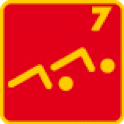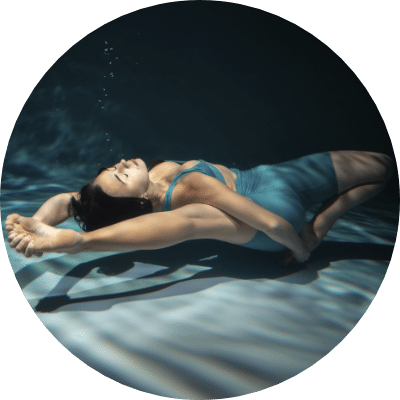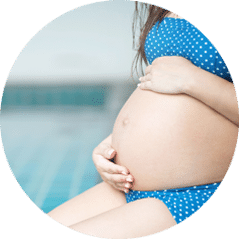SeaTurtles – our children’s sports swimming group
The friendly children’s & youth sports swimming according to swimsports.ch. The following courses take place as group lessons.
After the basic tests, the children and young people can consolidate the techniques they have learned in crawl-back crawl, dolphin, diving and breaststroke; We also incorporate fins and water polo techniques into our SeaTurtles courses; As well as interesting relays and great games and races, the course is of course not to be missed;
Click on the badges below to see what the children and teenagers learn at the different levels; We are looking forward to an interesting and fun course with the children and young people;
Frequently asked questions about sports swimming

Crawl with hip lift
Dolphin
16 – 25 m
crawl stroke. Actively and exaggeratedly lift your hips each time you dip your hand
Precise coupling of arms – body movement Continuous movement sequences Legs passive
Focus: Coupling arms – lifting hips
Superman back
Back
16 – 25 m
In an extended supine position, regular leg kick from the hips
with loose, inwardly turned feet. During the 6 – 8 leg kicks, one arm is held high and the other is placed against the body. Simultaneous arm change to 6 – 8 leg kicks.
Focus: During the 6 – 8 leg kicks, one arm held high, the other against the body.
Sternum thrust in supine position.
Chest
Maximum 10 leg kicks over 15 m
In an extended supine position, sternum thrust with visible gliding phase. Slowly tighten the lower legs to achieve a clear W-position of the legs. Dynamic swing-push movement until the legs are fully extended and closed. Arme liegen passiv am Körper.
Fokus: Bewegungseffizienz.
Superman crawl
Crawl
16 – 25 m
In an extended prone position with correct head position, regular leg kick from the hips with loose, inward-turned feet. One arm in front, the other against the body. Inhale per 6-8 leg kicks and before the arm pull with a rotation of approx. 45 degrees around the longitudinal axis to the side. Exhale steadily during the 6-8 leg kicks.
Focus: Regular leg kick.
Alternate stroke swimming
Distance
50 m
25 m back crawl followed immediately by 25 m crawl with 3-breathing.
Continuous movements without pause.
Focus: Continuous movements without pause.
Start crawl
Start
Dynamic jump from the starting block or from the edge of the pool.
One hand rests on the other. Hands and head dip in first. Sliding phase in stretched body position. After the transition from gliding to swimming, add 2 – 3 strokes of the crawl.
Focus: gliding phase in a stretched body position.
Tilt turn crawl
Turnaround
Swim to 5 m. One hand touches the wall. Tilt your body on its side, squat with your legs up, place your feet against the wall. The other hand and the gaze are brought into the swimming direction, the stop hand is brought forward above the water. Push off under water to glide. After the transition from gliding to swimming, add 2 – 3 strokes of crawl before the first inhalation.
Focus: Dynamic tilting and squatting of the legs.

Flat dolphin movement
Dolphin
16 – 25 m
Flat dolphin movement with immersion of the head and simultaneous active, flat lifting of the hips out of the water. Triggering the movement from the chest. At the same time, the symmetrical leg kick is performed from the hips with loose, inward-turned feet. Then lift your head (push your chin forward) and stretch your body at the same time (hips come down). Followed by a second leg kick. This results in a rhythm of 2. Arms are passive, positioned at the side of the body.
Focus: 2-piece rhythm.
Back rotation with one arm
Back
16 – 25 m
Back one-armed with clearly visible rotation around the longitudinal axis. In an extended supine position, regular leg kick from the hips with loose, inwardly turned feet. Dip the hand shoulder width with the little finger side. This lifts the opposite shoulder out of the water. Continuous movements of the respective arm without pausing the pulling arm. Passive arm attached to the body. Halfway through the distance: change arms.
Focus: Active rotation.
Efficient chest arm pull
Chest
16 – 25 m
Chest pull with breathing and light supporting crawl leg stroke. 1st pulling phase: outward movement of the forearms to approx. double shoulder width 2nd pressure phase: accelerated inward movement of the forearms (elbow-forward posture). The elbows must not be placed behind the shoulders. 3. inhalation must be completed when the arms are brought forward and the head is brought into the water 4. move your arms forward as narrowly as possible 5. clear sliding phase of the arms. The back of the hand always points in the direction of swimming during the propulsion movement.
Focus: The back of the hand always points in the direction of swimming during the drive movement.
Crawl with one arm
Crawl
Deep water
32 – 50 m
Single-arm crawl with a clear 3-dimensional pull and push pattern Passive arm in front. Change after every three arm pulls. Inhale to the side on the 3rd arm pull. Return phase of the arm with a loose hand close to the body. Dip the hand shoulder width with full extension of the arm.
Focus: 3-dimensional tension and compression pattern clearly recognizable.
3-layer
Distance
75 m
25 m backstroke 25 m breaststroke 25 m crawl.
Continuous movements without pauses and with adapted breathing. No time limit.
Focus: Continuous movements without pauses and with adapted breathing.
Start chest
Start
Dynamic jump from the starting block or from the edge of the pool. Hands and head dip in first. Sliding phase in stretched body position. The gliding phase is followed by a dive. The arms are pulled back symmetrically up to the thighs. The head must break through the surface of the water during the second movement cycle before the arms are brought forward. If a dolphin leg stroke is performed, this must be done during or at the end of the dive. After the transition from the underwater phase to the swimming phase, add 2 – 3 breaststroke strokes.
Focus: Dynamic jump.
Reversible chest
Turnaround
Tilting breaststroke from the start (see Test 1, Exercise 7). Both hands must touch the wall at the same time without overlapping the hands. Dynamic squatting of the legs and tilting of the body. After the push-off, a dipping pull takes place. The head must break through the surface of the water during the second movement cycle before the arms are brought forward. After the transition from the underwater phase to the swimming phase, add 2 – 3 breaststroke strokes.
Focus: dynamic squatting of the legs and tilting of the body.

Dolphin movement with arm pull.
Dolphin
16 – 25 m
Flat dolphin movement (see Test 2, Exercise 1) with 1 arm pull per 4 dolphin movements. Arms in forearms.
The fourth dolphin movement involves a complete symmetrical arm pull up to the thighs. The return phase takes place with the arms stretched out over the water. Rhythmic sequence of movements.
Focus: outstretched arms over water.
Back with one arm
Back
32 – 50 m
Back with one arm in flat water position with clearly recognizable pull and push pattern with elbow-forward position. Clearly visible rotation around the longitudinal axis. Continuous arm movements with alternating arms without pausing after every three arm movements. Passive arm attached to the body.
Focus: Pull and push pattern with elbow-forward posture.
Efficient chest arm pull
Chest
16 – 25 m
Chest pull with breathing and light supporting crawl leg stroke. 1st pulling phase: outward movement of the forearms to approx. double shoulder width 2nd pressure phase: accelerated inward movement of the forearms (elbow-forward posture). The elbows must not be placed behind the shoulders. 3. inhalation must be completed when the arms are brought forward and the head is brought into the water 4. move your arms forward as narrowly as possible 5. clear sliding phase of the arms. The back of the hand always points in the direction of swimming during the propulsion movement.
Focus: The back of the hand always points in the direction of swimming during the drive movement.
Chest coordination arms-legs-legs
Chest
16 – 25 m
Chest with one arm pull and two leg kicks. Arm pull with emphasized pull and push phase. The arms remain in an extended forward position during the second leg kick (gliding phase of the arms). Efficient leg kick with correct dynamics. The swinging and pushing movement must be completed until the heels touch.
Focus: Sliding phase of the arms.
Scheibenwischer Kraul
Crawl
16-25m
Stretched prone position, face in the water: with both arms windshield wiper with inward and outward movement of the forearms and hands under the upper body. Clear elbow-forward posture. On the 3rd inward movement, move one arm forwards and the other backwards. Breathe to the side. Return your arms under water to the windshield wiper position, etc. Breathe in once to the right and once to the left. Smooth movement. Legs passive
Focus: Smooth movement.
Layers, technology
Distance
100 m
25 m dolphin wave in a rhythm of 2 (see Test 2, Exercise 1) 25 m backstroke rotation (see test 2, Exercise 2) 25 m chest coordination, 1 arm pull – 2 leg kicks (see Test 2, Exercise 3) 25 m superman crawl (see Test 1, Exercise 4) Rhythmic movement sequences Change swimming styles without pausing or loss of quality. No time limit.
Focus: Change swimming styles without pausing and loss of quality.
Dolphin leg kicks in supine position
Start
8m
Push off in supine position with arms stretched out in a streamlined position (arms behind the ears). Glide approx. 80 cm below the water surface with small, fast dolphin leg strokes under water. Visible exhalation through the nose under water.
Focus: Streamlined, stretched arm position.
Rolling back
Turnaround
Swimming back crawl. Turn into a prone position just before the wall and initiate a quick rotation around the transverse axis with your head and shoulders. No inhalation in prone position. Push off while lying on your back and exhale through your nose. 3 – 4 flat, fast dolphin leg strokes and add 2 – 3 strokes after the transition to swimming.
Focus: Fast rotation around the transverse axis

Dolphin variation
Dolphin
16 – 25 m
3 moves dolphin complete with retrieval phase above water. During the return phase of the arms above the water, swing the outstretched arms forward at the same time close to the water surface.
Symmetrical arm pulls up to the thighs.
Follow this with 6 – 8 dolphin leg kicks with arms in front before 3 more complete cycles.
Focus: Stretched arms in the overwater phase
Back coordination
Back
50 m
Back with one arm. Tension and compression pattern of the arm clearly recognizable. Visible rotation around the longitudinal axis. The passive arm lies against the body and is lifted out of the water until it is vertical when the other arm dips in at the top. Then bring the arm back to the body.
Precise coordination of the two arms.
Change the arm after 25 m.
Focus: Precise coordination of the two arms.
Chest coordination arms – arms – legs
Chest
50 m
Chest with 2 arm pulls on one leg kick. The back of the hand always points in the direction of swimming during the propulsion movement of the arms. Visible elbow-forward posture. Inhale on each arm pull. Legs passively stretched during the 1st arm movement (sliding phase of the legs).
Focus: Sliding phase of the legs
Spiral crawl
Crawl
50 m
3 strokes crawl in prone position – turn over the pulling arm into the supine position – 3 strokes backstroke – etc.
Elbow-forward posture during pull and push phase in prone and supine position. Fluid and precise changes from the prone to the supine position and back. Rotation around the longitudinal axis in a tense, flat posture.
Focus: elbow-forward posture during pull and push phase in prone and supine position
Layers
Distance
100m
25 m dolphin 25 m backstroke 25 m breaststroke 25 m crawl
Swimming techniques in accordance with the rules, including start jump and underwater phase. The swimming techniques must be completed in accordance with the rules. No time limit.
Focus: Rule-compliant swimming techniques
Start Back
Start
8 m
Start back crawl. Swing your arms backwards over the water Head in the neck during the flight phase and overstretching of the body. Upper body above the waterline during the flight phase. Diving “into a hole”. Followed by a dolphin leg stroke under water in a streamlined gliding position.
Focus: During flight phase upper body above the waterline.
Roll turn crawl
Turnaround
8m
Crawl roll turn from the start (5 m). No inhalation directly before the turn. After the roll turn, push off in a lateral position and turn into a prone position while gliding. Gliding phase with 3 – 4 flat, fast dolphin leg strokes under water. After the transition from gliding to swimming, take 2 – 3 breaths and only then inhale.
Focus: No inhalation directly before and after the turn.

Paddling in supine position
Water feeling
25 m
Paddle 25 m in an extended supine position, of which 12 m head-first and 12 m foot-first. Significant inward and outward movement of the forearms. Upper arm remains still. The back of the hand always points in the direction of swimming. Elbows slightly turned outwards.
Footward: Fingertips lead the horizontal eight.
Head up: The balls of the hands lead the lying eight. Change direction by squatting the legs and making a half turn (Zuber).
Focus: Upper arm remains still
The back of the hand always points in the direction of swimming.
Track diving
Underwater phase
Distance diving for 15 seconds with start in the water. Cover as long a distance as possible with slow and controlled movements. Immersion depth 80 – 100 cm. Drive movement free.
Focus: Slow movements that are as economical as possible.
Back
Stamina Breathing
200 m
Back, whole position with regular breathing. Standard-compliant start and roll turns. Continuous movements. Without time limit.
Focus: Continuous movements with regular breathing.
Leg kick in supine position
Endurance legs
50 m
Time: 2.00 minutes
Regular leg kick in an extended supine position. Arms behind the ears, held high.
Focus: Regular leg kick from the hips with loose feet.
Position coordination
Layers
100m
100 m 4-layer coordinative
25 m Delfi n: 2x right arm – 2x left arm – 2x both arms
25 m Rücken: Beine Kraul, Arme Gleichschlag. Sliding phase with arms held high
25 m breaststroke: arms lengthwise along the body. Touch the outer instep with your hands. Clearly recognizable sliding phase
25 m crawl: two strokes each with return movement under water. On the third arm stroke, bring your arm forwards over the water to breathe from the side.
Focus: Correct movement execution of coordination tasks (precise coupling ability).
Start freestyle
Speed
12 m
Time: 10 sec
Start crawl on command from the starting block with sprint over 12 m. Glide phase with 4 – 5 flat fast delfi n leg strokes under water; After the transition from gliding to swimming, take 2 – 3 breaths and only then inhale.
Focus: Dynamic, fluid sequence of the start process and sprint

Tree trunk paddling
Water feeling
25m
Tree trunk paddles. Legs passive
In the prone position, a figure eight is performed at hip/waist height, below the body – starting from the balls of the hands. Arms are bent, hand position slightly upright. Elbows slightly turned outwards. Upper arms remain as still as possible. Breathe forwards or to the side.
Focus: Upper arms remain as still as possible.
Dive
Underwater phase
16 m
Start jump from the starting block followed by correct dives. A dolphin leg kick must be performed during or at the end of the arm pull. After the arm pull and dolphin leg kick, the arms are brought forward close to the body and the sternum kick is performed.
Focus: Correct coupling of the dolphin leg stroke with the dipping stroke of the arms.
Crawl 3-breathing
Stamina Breathing
100 m
Time: 2.15 minutes
Crawl, full position with regular 3-breathing. Rule-compliant starting and turning. Continuous movements and correct roll turns.
Focus: Continuous movements with regular 3-breathing.
Crawl leg kick
Endurance legs
50 m
Time: 1.45 minutes
Crawl leg stroke in prone position. Arms outstretched in front with swimming board. crawl leg kick visible in the water.
Focus: Efficient, regular leg kick.
Layers
Layers
100 m
Time: 2.00 minutes
100 m medley complete
Rule-compliant swimming techniques
Focus: Rule-compliant swimming techniques
Turn crawl – back
Speed
Time: 15 sec
Turn from crawl to backstroke with 10 m sprint backstroke.
Start in an extended prone position, hands touching the wall. On the whistle, the swimmer performs a leg kick and an explosive roll turn with a push-off from the wall in the backstroke position followed by a sprint.
Focus: Fast roll reversal.

Russian paddling
Water feeling
15 m
Paddling in front of the head in a prone position (upside down). With arms almost straight, perform a figure eight with your hands in front of your head. The fingertips guide the movement. The hands are angled towards the forearm. The angle between the water surface and the forearm is approx. 30°. A slight drop in the legs can be tolerated.
Focus: Precise movement execution with inward and outward movements of the hands.
Dolphin kicks under water
Underwater phase
15 m
Dolphin kicks in prone position under water. After pushing off the edge, perform flat, fast dolphin kicks under water. Immersion depth 80 – 100 cm.
Focus: Drive-efficient, flat, fast movements under water.
Chest breathing
Stamina Breathing
100 m
Chest: 2 dives without breathing, 2 normal chest cycles with normal breathing rhythm.
No time limit.
Focus: Controlled breathing.
sternum thrust
Endurance legs
50 m
Time: 1.45 minutes
50 m breaststroke arms in front. Efficient leg kick with correct dynamics. The swinging and pushing movement must be completed until the soles of the feet touch.
Breathe forward just before the leg kick.
Without swimming board.
Position coordination
Layers
200 m
200 m medley coordinated 50 m dolphin: The return phase of the arms takes place under water, breathing at the end of the pressure phase. No resting of the arms in front.
50 m backstroke: one-armed backstroke with clear rotation around the longitudinal axis. Arm change after 25 m. Passive arm placed against the body.
50 m breaststroke: 1x right arm and left leg – 1x left arm and right leg – 1x complete cycle
50 m crawl: alternating backstroke. The hands catch up at the back. It may only be inhaled when the hand leaves the water. 3-breathing.
Chest
Speed
50 m
Time: 55 sec
50 m breaststroke with correct start and turn, incl. Dive
Focus: Precise coupling.

Torpedo paddles
Water sensation
15 m
Time: 45 Seconds
Paddle in a supine position with the arms stretched upwards. The hands are dorsally flexed. Movement from the balls of the hands. Precise movements with inward and outward movements of the hands.
Dolphin kicks under water
Underwater phase
12 m
Time: 12 seconds
Dolphin kicks in supine position under water after pushing off the edge.
Immersion depth 80 – 100 cm.
Focus: Exhale through the nose.
Crawl, breathing pyramid
Stamina Breathing
200 m
200 m crawl. Each 25 m whole layer with breathing pyramid.
1/3/5/7/7/5/3/1s – Breathing.
No time limit.
Focus: Swimming calmly despite a lack of oxygen.
Leg kick positions
Endurance legs
100 m
Time: 4.00 minutes
100 m leg kick medley, arms held high.
25 m dolphin 25 m backstroke 25 m breaststroke 25 m crawl.
Without swimming board.
Focus: Efficiency of the leg drive.
Layers
Layers
200 m
Time: 4.30 minutes
200 m medley complete.
Focus: All swimming techniques are completed according to the rules.
Dolphin
Speed
25 m
Time: 18 sec
25 dolphin whole layer incl. Start.
Focus: Efficient, low-resistance movements.








